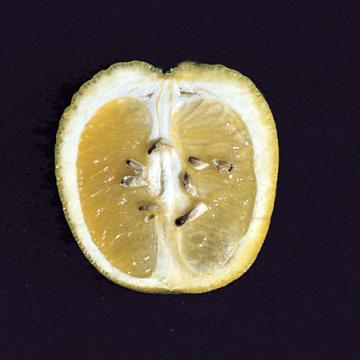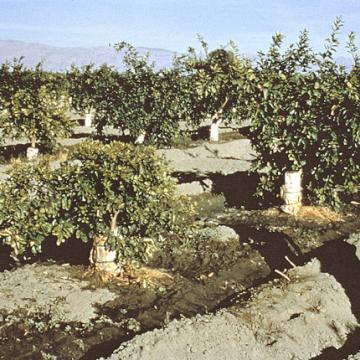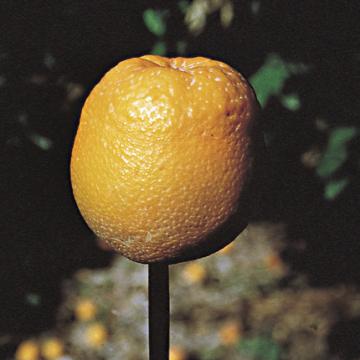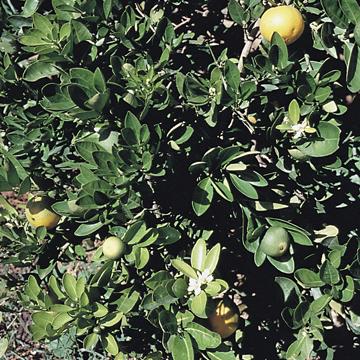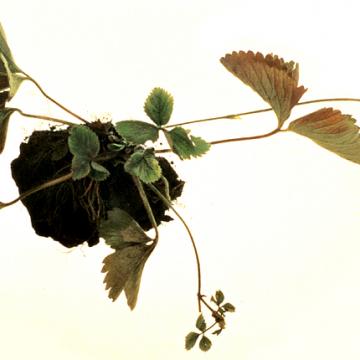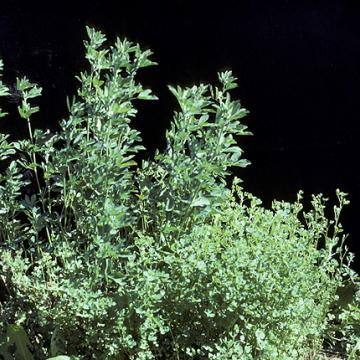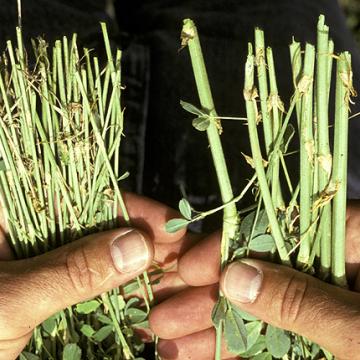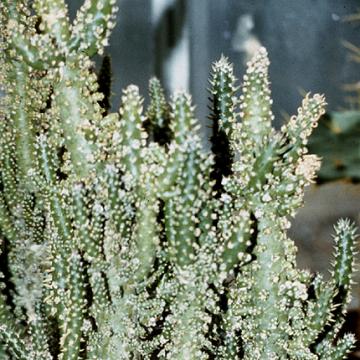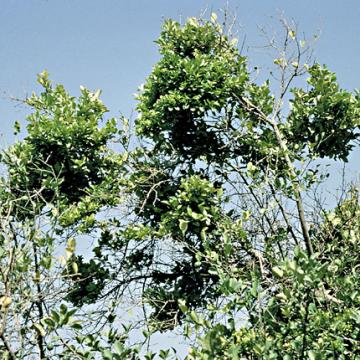DISEASE: Citrus stubborn disease
HOST: Citrus (sp. unknown)
Characteristic symptoms of thickened peel at peduncle end and aborted seeds.
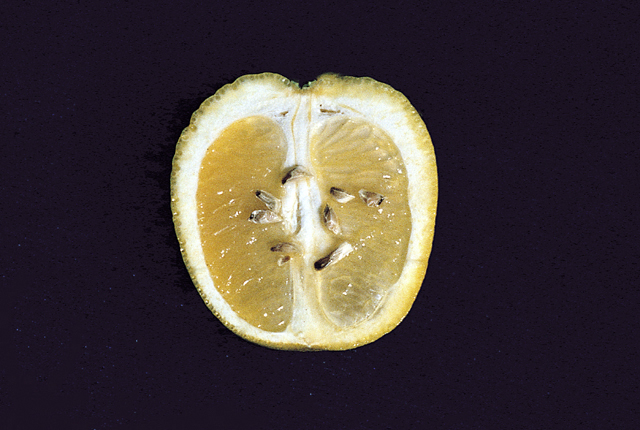
Citrus stubborn disease | Citrus (sp. unknown)
DISEASE: Citrus stubborn disease
HOST: Citrus (sp. unknown) (Citrus sp.)
PATHOGEN: Spiroplasma citri
SOURCE: APS
DISEASE: Citrus stubborn disease
HOST: Citrus (Orange)
Severely stunted sweet orange tree. Foliage is dense and abnormally upright. Leaves may be cupped and unusually thick. They also may be chlorotic and mottled.
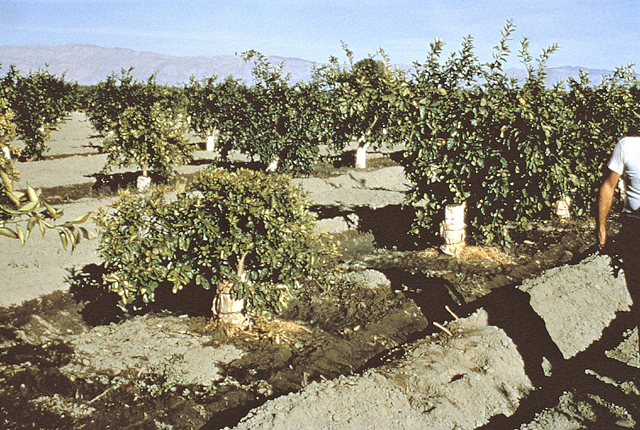
Citrus stubborn disease | Citrus (Orange)
DISEASE: Citrus stubborn disease
HOST: Citrus (Orange) (Citrus sinensis)
PATHOGEN: Spiroplasma citri
SOURCE: S. M. Garnsey
DISEASE: Citrus stubborn disease
HOST: Citrus (Orange)
Fruit from a diseased tree are frequently lopsided or acorn-shaped, usually few and small. They may not color at stem end.
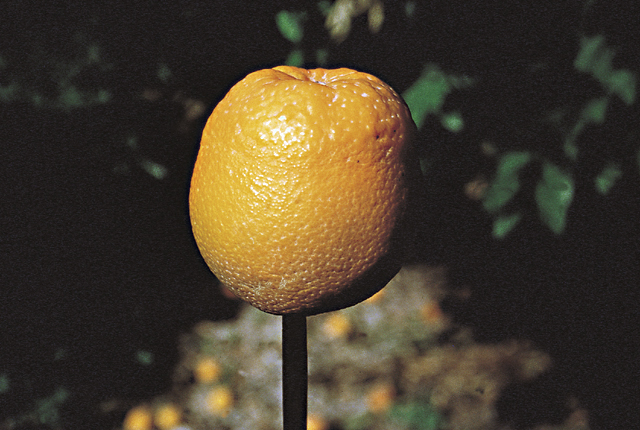
Citrus stubborn disease | Citrus (Orange)
DISEASE: Citrus stubborn disease
HOST: Citrus (Orange) (Citrus sinensis)
PATHOGEN: Spiroplasma citri
SOURCE: J. M. Bove, M. Garnier
DISEASE: Citrus stubborn disease
HOST: Citrus (Orange)
Sweet orange exhibiting off-season flowering and crop heterogeneity. Diseased trees generally have shoots with shortened internodes, which lead to rosettes with cupped leaves.
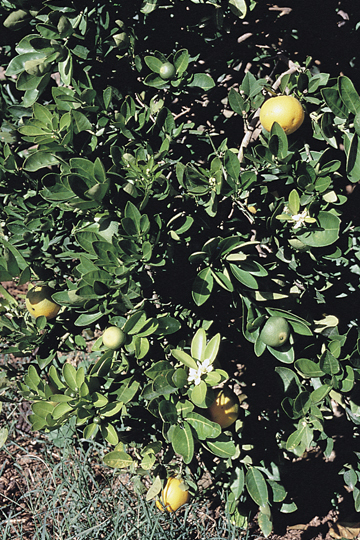
Citrus stubborn disease | Citrus (Orange)
DISEASE: Citrus stubborn disease
HOST: Citrus (Orange) (Citrus sinensis)
PATHOGEN: Spiroplasma citri
SOURCE: J. M. Bove, M. Garnier
DISEASE: Strawberry lethal decline
HOST: Strawberry
Diseased plant with bronzing of older leaves and upward rolling or cupping of younger leaves. Leaves are chlorotic on upper surfaces and reddish or purplish on lower surfaces. In time, the entire plant dies.
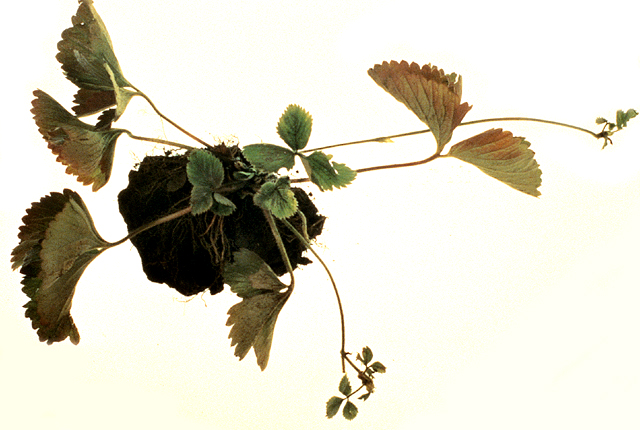
Strawberry lethal decline | Strawberry
DISEASE: Strawberry lethal decline
HOST: Strawberry (Fragaria × ananassa)
PATHOGEN: 'Candidatus Phytoplasma' sp.
PATHOGEN SYNONYM: Phytoplasma (undefined)
SOURCE: H. Schwartz
DISEASE: Witches'-broom
HOST: Alfalfa
Alfalfa plant (center) exhibiting stunting and proliferation of stems. Other symptoms are small, rounded, chlorotic, often puckered leaves and a yellowish cast.
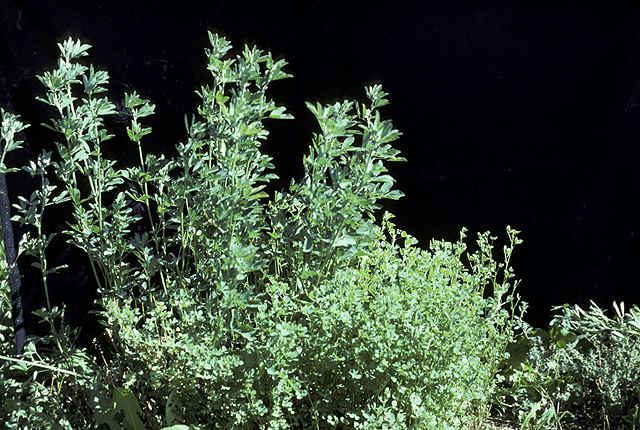
Witches'-broom | Alfalfa
DISEASE: Witches'-broom
HOST: Alfalfa (Medicago sativa)
PATHOGEN: 'Candidatus Phytoplasma trifolii'
PATHOGEN SYNONYM: Phytoplasma Clover proliferation group
SOURCE: S. Thomson
DISEASE: Witches'-broom
HOST: Alfalfa
Young plant (left) with small, numerous stems (witches'-broom). Healthy stems (right).
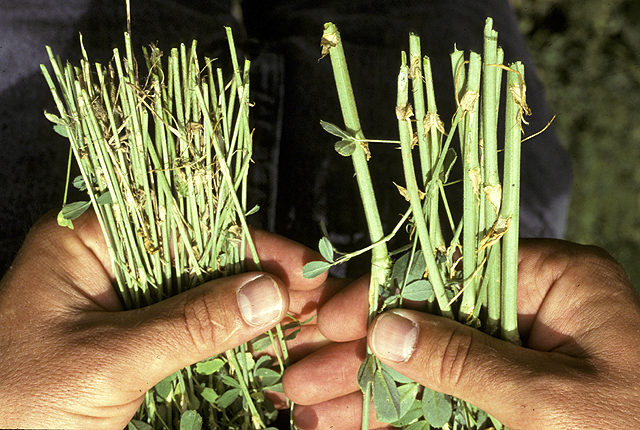
Witches'-broom | Alfalfa
DISEASE: Witches'-broom
HOST: Alfalfa (Medicago sativa)
PATHOGEN: 'Candidatus Phytoplasma trifolii'
PATHOGEN SYNONYM: Phytoplasma Clover proliferation group
SOURCE: S. Thomson
DISEASE: Witches'-broom
HOST: Cactus
Witches'-broom of Opuntia cactus.
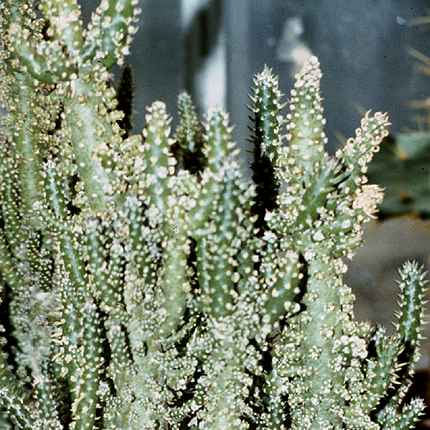
Witches'-broom | Cactus
DISEASE: Witches'-broom
HOST: Cactus (Opuntia sp.)
PATHOGEN: 'Candidatus Phytoplasma' sp.
PATHOGEN SYNONYM: Phytoplasma (undefined)
SOURCE: R. McCoy, M. Davis
DISEASE: Witches'-broom
HOST: Citrus (Lime)
Lime tree with compact, small leaves (witches'-broom). Leaves on older brooms dry out and eventually drop, leaving dead, bare branches. There are no flowers or fruit on brooms.
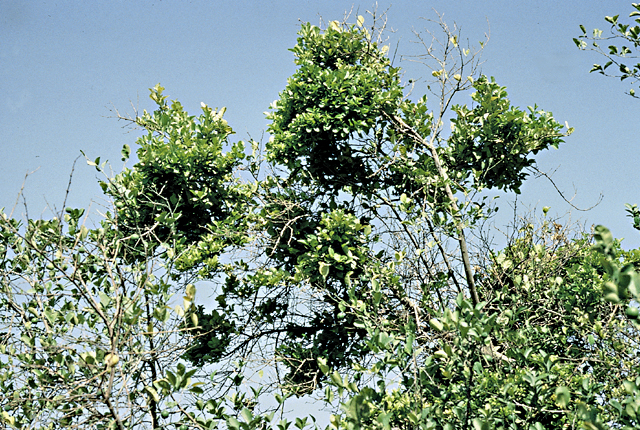
Witches'-broom | Citrus (Lime)
DISEASE: Witches'-broom
HOST: Citrus (Lime) (Citrus sp.)
PATHOGEN: 'Candidatus Phytoplasma aurantifolia'
PATHOGEN SYNONYM: Phytoplasma Peanut witches'-broom group
SOURCE: J. Bove, M. Garnier


